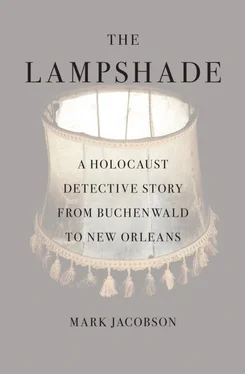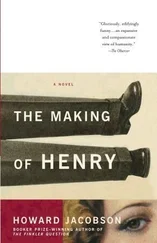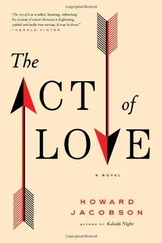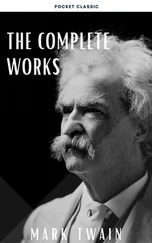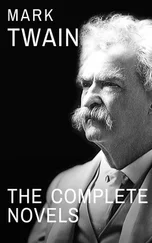If the storm had laid a brutal kind of poetry on New Orleans, created a one-of-a-kind landscape of desolation in the country’s most romanticized city, a new vibe was in the air. According to the papal calendar, Mardi Gras fell on February 16 this particular year, and only a few days before, the city had been turned upside down in a single weekend. On Saturday, February 6, with Ray Nagin prevented from running again by term limits—and his own 20 percent approval rating—Mitch Landrieu had been elected the new mayor. Brother of Louisiana U.S. senator Mary Landrieu, Mitch was the son of Moon, the last previous white New Orleans mayor. After thirty-two years of black clubhouse leadership and nepotism dominated by the Morials, Dutch and Marc, along with Nagin—a period of population loss, financial decline, rampant (but hardly unprecedented) corruption, and off-the-charts murder—it was considered time to make the only political change that the majority of people recognize down here and to let the whites back in at the trough. Not everyone was happy about this (Landrieu received barely 28 percent of the eligible vote), as the hosts on WBOK, a black talk station, made clear. Hour after hour the airwaves were rife with fulmination against the so-called Shadow Government, the white, uptown ruling class that had been calling the shots for centuries and would continue to do so. It was important for blacks to control the mayor’s office and the patronage it offered, people said, as a counterbalance. No one doubted the soundness of this analysis, but cooler heads agreed that, given a chance to do something truly heroic both during the storm and beyond—to at least pretend to, like Giuliani did in 9/11—Ray Nagin had blown it, big-time. Besides, as one WBOK caller said, “White people are like the weather. You can’t get away from them. You just got to figure how to work around them, like we been doing here for the past four hundred years.”
But this chatter was mere background noise compared to what happened the next day, Sunday, February 7, when after four decades of mostly miserable football, the New Orleans Saints won the Super Bowl. By the final gun, grown men were crying in the street, people were drinking and partying so hard that it was a wonder they could manage to get out for Mardi Gras only a week later to drink and party some more. The town was still pretty much a disaster area. The Army Corps of Engineers was probably screwing up the levees worse than ever. Buildings two blocks north of St. Claude Avenue had three walls or fewer, the murders kept coming every day. But, who dat! The Saints won the Super Bowl! It was a gift only the most churlish could refuse.
This was the mood as the Bone Boys stepped off to wake up the town for Mardi Gras 2010, rattling our dead man shovels on the uneven pavement behind us. It was time to remind the predeceased that their days were numbered, to assault the vain fetish of living flesh with this year’s slogan, “Tomorrow, your face!” Skulls painted on mirrors were held aloft in case anyone missed the point. The route had been expanded to include the streets closer to the Industrial Canal: Mazant, Alvar, Pauline, Lesseps, Bartholomew, all the way over to Poland. This was where, according to Dave Dominici’s instructions, I had spent several days knocking on doors to see if anyone knew anything about a lampshade made of human skin. That was in 2007. Back then half the houses were boarded up, wrecked. In 2010 some ruins remained, places with the once-ubiquitous Gas Off signs, but much of the neighborhood had “come back.” Houses were painted in those marvelous wack-job parish colors, offset by magenta shutters. Businesses like the Jesus Is Lord Plumbing Company had popped up.
It was the coldest New Orleans winter in three decades, so everyone was extra-fortified by Jack Daniel’s behind the skull mask. Stumbling through the neighborhood, I had the thought that perhaps the lampshade wasn’t man-made after all but rather an organic bit of hybrid plant/animal matter that germinated in places where terrible, willfully forgotten things had occurred—like, say, maintaining one of the world’s largest slave markets for a hundred years. Maybe the shade had grown in the same way that nooses had appeared like strange fruit one day on the branches of a tree in front of a high school in Jena, Louisiana, which shares a name with Jena, Thuringia, where Nazi Hans F. K. Gunther once headed the Department of Race Sciences (work that was honored by a Goethe arts and sciences medal in 1940) at the same university where Volkhard Knigge teaches the psychology of history today. A noose, after all, isn’t all that different from a lampshade, being one more innocent-seeming household object, a neutral piece of rope, until coiled into a certain shape and knotted. In my tipsy botanical conception, these malicious blooms were widely occurring, their habitat just about anywhere, but they weren’t necessarily perennial. At some point the curse could come off the land from which they sprang and they might wither and die, at least this was the hope.
The Bone Boys were making a joyful racket by the time we turned on Royal Street and, following the vanished tracks of the streetcar named Desire, came to the corner of Piety, where Skip Henderson had bought the lampshade from Dave Dominici. The year before, the house had had the look of one more abandoned structure. Now Dominici’s daughter had moved in, along with her boyfriend and their two children, Dave’s grandchildren; they’d fixed the house up, brought it back to life.
I talked to Dominici a couple of days later when he called up his ever-loving, endlessly patient seventy-eight-year-old mother, Patsy, at her house near the Metairie/Kenner border. It was the only way to talk to Dave, said Patsy. Dave would have loved to contact me directly, but he was still locked up, this time near Shreveport, and prisoners are not allowed to call cell phones. “Wouldn’t you know it,” Patsy said, “just about everyone David knows has a cell phone. So he rings me, like, ten times a day, with the charges reversed, of course.”
What a great stroke of luck it was, getting to talk to me, Dominici said, now “totally clean” but sounding the same as ever, not counting the occasional clunk of AA phraseology. He’d just put the finishing touches on his autobiography, Or Else Is Here, and I’d be doing him a great favor if I would “grab the bull by the horns” and “get the ball rolling” by calling up the Oprah show because he was certain the talk show host was going to have her socks knocked off by the book and make it a major selection of her literary club. After his release, which he said would be any day now, pending a few hearings, he planned to buy a new suit so he’d look good for his TV appearances.
It wasn’t the money that he wanted, just the opportunity to show how sorry he was for his “previous screwups,” and to prove it, he was going to take only 50 percent of the profits from Or Else Is Here, leaving the rest to the fund to save New Orleans’s cemeteries and to “the members of my family that I have let down.” He was a new man, he said, I’d see that soon enough. Until then, Dominici said he wanted to thank me for taking the lampshade “to the next level” and continuing the work he started by “bringing this thing to light.” He got in one last “Back at ya” before the electronic voice said, “Five seconds,” and terminated the call.
The morning after Mardi Gras, I always go with Skip Henderson to 7:30 mass at St. Louis Cathedral on Jackson Square, which was first constructed in 1718 and remains the oldest continually operating church in America. First we drive over to Bourbon Street to see the trash. This is the only time of the year Skip intentionally goes to Bourbon Street. The city used to make a big deal out of weighing the trash picked up in the French Quarter the morning after Mardi Gras; the more garbage, the better the party. Everyone was always trying to throw stuff away to beat the record. When Ray Nagin, the technocrat, was elected, trash weighing and the bets taken on the final poundage were considered déclassé, so the practice was abandoned. But you could still eyeball it, estimate the drift-size of the detritus, assign a degree of wretchedness to the pooled bodily fluids. This year’s Mardi Gras had outtrashed any other since the storm. Did this mean Katrina was finally over? I asked Skip.
Читать дальше
